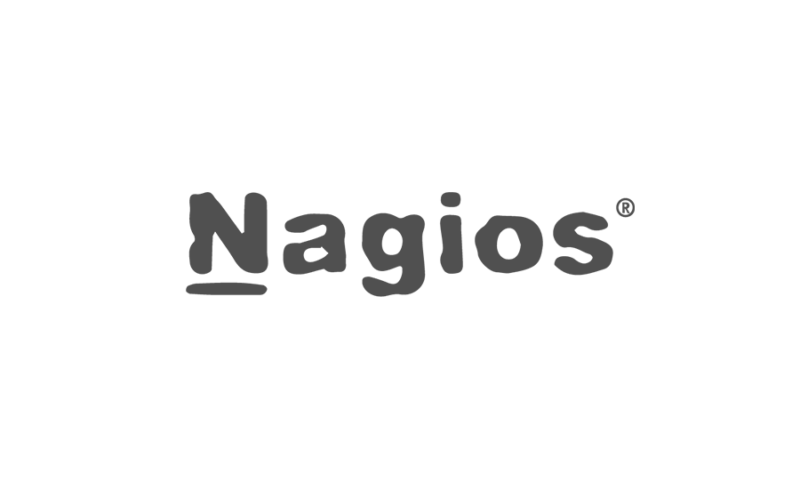In the dynamic world of IT infrastructure monitoring, Nagios has long been hailed as a stalwart, providing reliable monitoring and alerting capabilities to countless organizations. However, as technology continues its rapid evolution, so do the demands placed on monitoring solutions. In this comprehensive guide, we’ll embark on a journey to discover Nagios alternatives that not only meet but exceed these evolving requirements. We will delve deep into each Nagios alternative, exploring their unique features, limitations, and what sets them apart from the renowned Nagios monitoring system.
Nagios: A Brief Overview

Before we dive into the universe of Nagios alternatives, it’s essential to grasp the essence of Nagios, the benchmark against which we’ll measure its competitors. Nagios offers an impressive array of features that have earned it a place of honor in the world of monitoring tools.
Key Features of Nagios
- Flexible Monitoring: At its core, Nagios is celebrated for its adaptability. It empowers you to monitor an extensive array of your IT infrastructure components, from servers and switches to applications and services. Its flexibility is a paramount advantage, making it versatile across diverse environments.
- Customizable Alerts: Nagios offers a finely-tuned alerting system. You can configure alerts based on specific thresholds and conditions, ensuring that you receive timely notifications when potential issues arise. This customization is a key driver of Nagios’s popularity.
- Plugin Ecosystem: Nagios boasts a vast and ever-growing library of plugins that extend its monitoring capabilities. These plugins are like tools in a Swiss Army knife, allowing you to monitor various devices and services across your infrastructure.
- Community Support: The Nagios community is a vibrant and dedicated one. This thriving ecosystem of users and developers ensures that Nagios remains at the forefront of monitoring technology, constantly evolving and improving.
Limitations of Nagios
However, Nagios is not without its limitations, and it’s vital to acknowledge them as we explore Nagios alternatives:
- Complex Configuration: Setting up Nagios can be akin to navigating a labyrinth, particularly for beginners. Its configuration can be intricate, and mastering it often entails a steep learning curve.
- Scalability Challenges: Nagios may face challenges when confronted with the need to scale for larger and more dynamic environments. While it can be adapted for such scenarios, it requires meticulous planning and fine-tuning.
- User Interface: Some users find Nagios’s web interface less intuitive and user-friendly compared to the sleek interfaces of modern Nagios alternatives. This aspect often plays a crucial role in user satisfaction.
- Lack of Auto-Discovery: Nagios lacks an auto-discovery feature. In practical terms, this means that when new devices are added to your network, they must be manually configured and integrated into the monitoring system.
Why Consider Nagios Alternatives?

Now, the question looms large: why should you consider Nagios alternatives, an established champion in the world of monitoring? Let’s explore the rationale behind this critical decision:
1. Evolution of Technology
As technology surges ahead, the demands on monitoring systems evolve as well. Modern Nagios alternatives offer features and scalability that align seamlessly with the dynamic nature of contemporary IT environments.
2. Ease of Use
Some of the Nagios alternatives we will explore provide more user-friendly interfaces and streamlined configuration processes. This reduces the learning curve for new users and accelerates the time to value.
3. Scalability
For organizations experiencing rapid growth, Nagios alternatives that scale more effortlessly can be a game-changer. They alleviate operational challenges and support the seamless expansion of monitoring capabilities.
4. Enhanced Features
Newer solutions often introduce advanced features like auto-discovery, predictive analysis, and native compatibility with cloud environments. These features can be transformative for businesses looking to stay ahead of the curve.
Commonly Used Nagios Alternatives For Comprehensive Monitoring

Now that we’ve established the context and motivation for exploring alternatives, let’s embark on a comprehensive journey to examine some of the top Nagios alternatives available today. Each of these Nagios alternatives offers a unique blend of features and capabilities, catering to diverse monitoring requirements.
1. Zabbix
Zabbix, a stalwart among open-source monitoring solutions, has earned its reputation for scalability and flexibility. With Zabbix, you’ll encounter a plethora of remarkable features:
Agent-Based and Agentless Monitoring
Zabbix excels in offering both agent-based and agentless monitoring options. This flexibility empowers you to choose the most suitable approach for gathering data from your infrastructure components.
Rich Plugin Ecosystem
Similar to Nagios, Zabbix boasts a rich library of plugins and templates. These resources extend its monitoring capabilities, allowing you to monitor a wide array of devices and services comprehensively.
User-Friendly Web Interface
Zabbix’s web interface is celebrated for its user-friendliness. It simplifies the often complex task of configuring and managing your monitoring system, making it accessible even to users with limited experience.
Notification and Alerting
Customized notifications and alerts are at your fingertips with Zabbix. You can configure alerts to align precisely with your unique monitoring needs, ensuring that you’re always aware of critical issues.
2. Prometheus
Prometheus, another formidable open-source contender, specializes in the collection and querying of time-series data. Its features are tailored to meet the demands of modern monitoring:
Dynamic Service Discovery
Prometheus introduces an innovative feature: dynamic service discovery. It automatically identifies and adds new services to your monitoring environment, significantly reducing the need for manual configuration.
Advanced Query Language
Powered by PromQL, Prometheus’s query language, you gain access to sophisticated data analysis and alerting capabilities. This empowers you to derive deeper insights from your monitoring data.
Scalability
Prometheus is explicitly designed for scalability. It can seamlessly handle the demands of large-scale monitoring environments, making it a preferred choice for organizations with ambitious growth plans.
Support for Kubernetes
If you’re navigating the world of container orchestration with Kubernetes, Prometheus offers native support for monitoring containers and orchestration, making it an excellent fit for cloud-native environments.
3. Icinga 2
Icinga 2, a successor to Nagios, inherits its strengths while addressing some of its limitations. Let’s explore what makes Icinga 2 stand out:
Improved Performance
Icinga 2 brings notable improvements in performance and scalability compared to its predecessor. This enhancement ensures that your monitoring system can keep pace with the ever-increasing demands of your organization.
Configuration as Code
With Icinga 2, configuration is transformed into code. This modern and more maintainable configuration format simplifies the task of managing and evolving your monitoring system.
Web Interface
The user-friendly web interface of Icinga 2 offers a clear and concise overview of your monitored infrastructure. It streamlines configuration and monitoring tasks, enhancing your operational efficiency.
Support for Clustering
Icinga 2 is equipped to support clustering, ensuring high availability and scalability for your monitoring environment. This is especially crucial for organizations that demand uninterrupted monitoring.
4. Sensu
Sensu, an event-based monitoring and observability platform, excels in automating monitoring tasks. Its unique features include:
Agent-Based Monitoring
Sensu employs agents to collect data from your infrastructure. This approach offers versatility in gathering essential data points across your environment.
Automation Framework
Sensu provides a robust framework for automating responses to incidents and events. This automation accelerates incident resolution and minimizes downtime.
Scalability
Designed with scalability in mind, Sensu is well-equipped to handle large-scale and dynamically changing environments. As your organization grows, Sensu can seamlessly grow with you.
Extensible Plugins
Sensu’s plugin ecosystem is expansive, allowing you to extend its capabilities to monitor various services and applications. You’re not limited by out-of-the-box functionality.
5. OpenNMS
OpenNMS, an enterprise-grade network monitoring and management platform, stands out with its comprehensive features:
Auto-Discovery
OpenNMS shines in auto-discovering devices and services within your network. This automation reduces manual configuration efforts and ensures an up-to-date inventory.
Event Management
Comprehensive event management capabilities, including event correlation and processing, make OpenNMS a formidable choice for organizations seeking holistic network monitoring.
Support for SNMP
OpenNMS has robust support for Simple Network Management Protocol (SNMP), making it an ideal choice for monitoring network devices like routers, switches, and firewalls.
Integration with Grafana
You can seamlessly integrate OpenNMS with Grafana for advanced visualization and analytics. This combination provides a powerful toolset for monitoring and reporting.
6. Check_MK
Check_MK, built on the foundations of Nagios and Icinga, offers a more user-friendly experience without sacrificing functionality. Notable features include:
Intuitive Web Interface
Check_MK’s web interface is lauded for its user-friendliness. It simplifies the configuration and management of your monitoring system, reducing the learning curve for new users.
Inventory Management
Effective inventory management features make Check_MK a valuable asset for tracking your infrastructure components. You can effortlessly keep tabs on your devices and services.
Customizable Dashboards
Check_MK allows you to create custom dashboards tailored to your specific monitoring needs. These dashboards offer insightful visualizations of your data and trends.
Integrated Reporting
Reporting capabilities are seamlessly integrated into Check_MK, simplifying the sharing of monitoring data with stakeholders and facilitating informed decision-making.
7. Netdata
Netdata, an open-source real-time monitoring and performance optimization tool, distinguishes itself with its simplicity and effectiveness:
Real-Time Visualization
Netdata delivers real-time visualization of system and application performance, empowering you with immediate insights into your infrastructure’s health.
Easy Installation
Installation of Netdata is straightforward and supports a wide range of platforms, making it accessible to a broad user base.
Alarm Notification
You can configure alarms and notifications within Netdata, ensuring that you stay informed about critical performance issues that demand immediate attention.
Extensive Plugin Support
Netdata continues to expand its library of plugins, allowing you to monitor various aspects of your infrastructure. It’s a versatile solution that adapts to your unique needs.
8. LibreNMS
LibreNMS, a dedicated network monitoring system, shines in the realm of network device monitoring:
SNMP Support
LibreNMS excels in monitoring network devices using the Simple Network Management Protocol (SNMP). It provides in-depth insights into the health and performance of your network infrastructure.
Auto-Discovery
One of LibreNMS’s standout features is its automatic device discovery. New network devices are detected and added to the monitoring system without the need for manual intervention.
User-Friendly Interface
The web interface of LibreNMS is intuitive and provides detailed insights into your network’s status. It’s an excellent choice for network administrators seeking a straightforward tool.
Integration with Observium
LibreNMS is a fork of Observium and inherits some of its features and capabilities. This heritage contributes to its robust network monitoring capabilities.
9. Zenoss
Zenoss, an enterprise-grade monitoring and analytics platform, bridges the gap between traditional and cloud-based infrastructure monitoring:
Hybrid Cloud Support
Zenoss is uniquely suited for hybrid environments, offering monitoring capabilities that span both on-premises and cloud-based infrastructure.
Event Correlation
Zenoss excels in event correlation, helping you identify and prioritize incidents efficiently. This feature is essential for managing the complexity of modern IT environments.
Automation and Remediation
Automation and remediation capabilities are integral to Zenoss. They streamline incident response, reducing the time and effort required to resolve issues.
Integration with ServiceNow
Zenoss seamlessly integrates with ServiceNow, aligning your monitoring and incident management processes for a more cohesive IT operations approach.
10. Opsview
Opsview, a monitoring and analytics platform, is tailored for hybrid cloud and on-premises environments:
Hybrid Cloud Monitoring
Opsview’s strength lies in its ability to monitor hybrid cloud environments effectively. It provides visibility into both cloud-based and on-premises infrastructure.
Unified Monitoring
Opsview delivers unified monitoring for IT operations. This holistic approach ensures that you have a comprehensive view of your entire environment.
Automation and Orchestration
Opsview includes automation and orchestration capabilities, allowing you to automate routine tasks and orchestrate incident response seamlessly.
Integration with ITSM Tools
You can seamlessly integrate Opsview with IT Service Management (ITSM) tools, creating a unified IT operations ecosystem that facilitates efficient service delivery.
11. PRTG Network Monitor
PRTG Network Monitor, a commercial network monitoring tool, stands out for its user-friendly design and versatility:
Auto-Discovery
PRTG Network Monitor simplifies the often cumbersome task of network discovery by automating the process. New devices and services are added effortlessly to your monitoring system.
Custom Sensors
With PRTG, you can create custom sensors to monitor specific aspects of your infrastructure. This level of customization ensures that you monitor exactly what matters most.
User-Friendly Interface
The intuitive web interface of PRTG Network Monitor streamlines configuration and management tasks. It’s an accessible choice for users of all experience levels.
Notification and Reporting
PRTG offers robust notification and reporting capabilities. You can configure alerts to keep you informed about network issues and generate comprehensive reports for stakeholders.
12. Shinken
Shinken, a Nagios-compatible monitoring framework written in Python, stands out with its focus on scalability and flexibility:
Scalability
Shinken prioritizes scalability and high availability. It’s tailored to meet the demands of large-scale monitoring environments, making it a reliable choice for enterprises.
Configuration as Code
Configuration in Shinken is defined using code, which enhances maintainability and allows for version control. It’s an approach favored by modern DevOps practices.
Flexible Plugin Support
Shinken offers extensive plugin support, similar to Nagios. This versatility allows you to monitor an extensive range of devices and services across your infrastructure.
Integration with Monitoring Tools
Shinken can be seamlessly integrated with other monitoring and alerting tools, amplifying its capabilities and extending its reach within your IT ecosystem.
Factors To Consider While Choosing The Perfect Nagios Alternative

Now that we’ve explored the expansive landscape of Nagios alternatives, it’s essential to consider several critical factors when selecting the ideal alternative for your organization:
1. Scalability
Assess the scalability of each Nagios alternative. Does it have the capacity to accommodate your current infrastructure and future growth plans?
2. Ease of Configuration
Evaluate how user-friendly the Nagios alternative’s configuration process is. An intuitive interface can save time and reduce the learning curve for your team.
3. Integration Capabilities
Consider how seamlessly the alternative can integrate with other tools and services within your organization. Integration is crucial for building a cohesive IT ecosystem.
4. Customization Options
Examine the level of customization that each alternative offers. Can you tailor it to your specific monitoring needs and workflows?
5. Community and Support
Investigate the availability of community support and official documentation for each alternative. A robust support ecosystem can be invaluable when troubleshooting issues or seeking guidance.
Conclusion
In the ever-evolving landscape of IT infrastructure monitoring, exploring Nagios alternatives is not just a prudent move; it’s a necessity. The alternatives discussed in this extensive guide bring to the table a diverse array of features and capabilities, each poised to enhance your monitoring and alerting capabilities. Whether it’s scalability, ease of use, advanced features, or a combination of these factors that you seek, these alternatives offer compelling options to keep your organization ahead of the curve in the realm of IT monitoring and observability.









